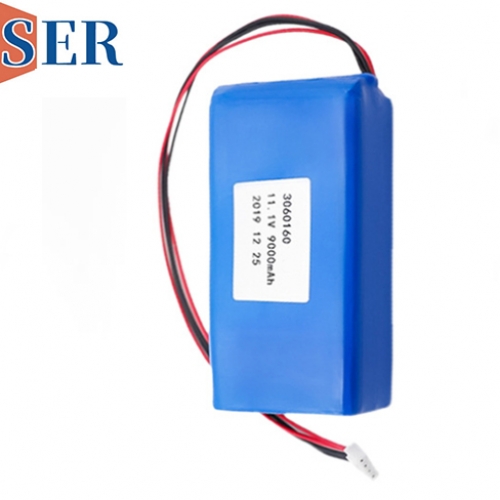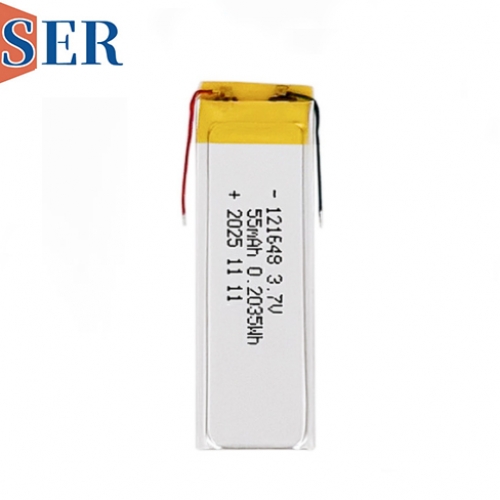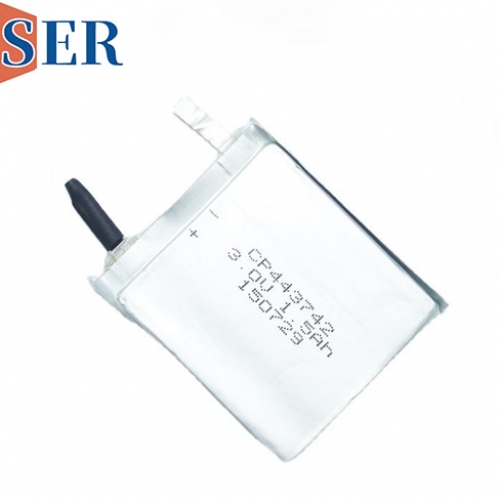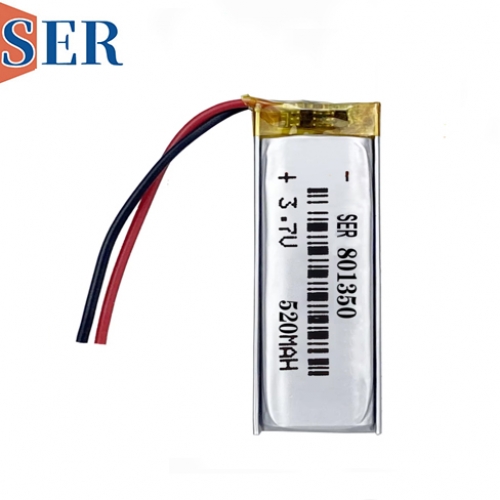ER10450S AAA 3.6V 150°C Li-SOCl₂ Batteries in MWD Operations and Oil Drilling
ER10450S AAA 3.6V 150°C Li-SOCl₂ Batteries in MWD Operations and Oil Drilling
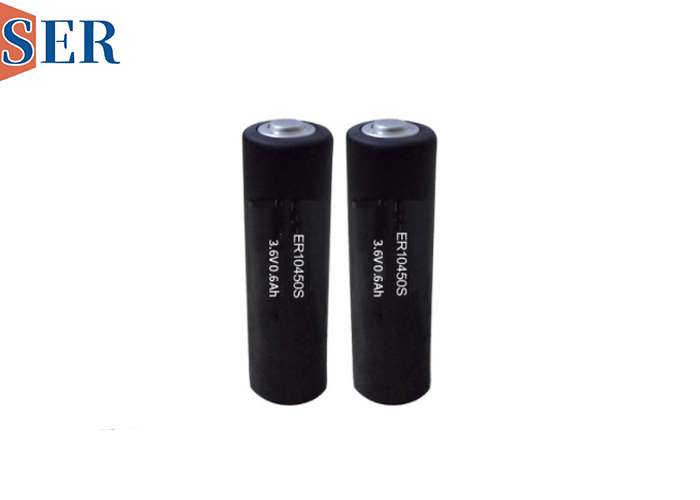
Abstract
In the challenging environments of Measurement While Drilling (MWD) operations and oil drilling, the reliability and performance of power sources are critical to operational success. The ER10450S AAA 3.6V 150°C Li-SOCl₂ battery has emerged as a pivotal solution, offering high energy density, superior temperature resistance, and exceptional reliability. This article delves into the technical specifications, operational advantages, and applications of these batteries in MWD and oil drilling contexts, highlighting their role in enhancing efficiency, safety, and data integrity in downhole operations.
Keywords: Li-SOCl₂ batteries, MWD operations, oil drilling, high-temperature battery, energy density, downhole tools, data transmission, reliability
1. Introduction
The exploration and extraction of oil and gas resources often take place in some of the most inhospitable environments on Earth. From the extreme pressures of deep-sea drilling to the scorching temperatures of geothermal zones, the equipment used in these operations must withstand harsh conditions to function effectively. Among the most critical components of downhole tools are the power sources that drive sensors, communication systems, and data logging devices. The ER10450S AAA 3.6V 150°C Li-SOCl₂ battery has been specifically engineered to meet these stringent requirements, offering a combination of high energy density, exceptional temperature resistance, and long-term reliability.
2. Understanding Li-SOCl₂ Batteries
2.1 Chemistry and Composition
Lithium-thionyl chloride (Li-SOCl₂) batteries are a type of primary (non-rechargeable) battery known for their high energy density and wide operating temperature range. The chemistry of these batteries involves a lithium anode and a cathode composed of a porous carbon structure saturated with thionyl chloride (SOCl₂) electrolyte. During discharge, lithium metal reacts with SOCl₂, producing lithium chloride (LiCl), sulfur dioxide (SO₂), and electrons, which flow through an external circuit to power the device.
2.2 Advantages of Li-SOCl₂ Batteries
High Energy Density: Li-SOCl₂ batteries offer one of the highest energy densities among primary batteries, enabling longer operational life and reduced size and weight of the power source.
Wide Operating Temperature Range: These batteries can function effectively in temperatures ranging from -55°C to +150°C, making them suitable for extreme environmental conditions.
Low Self-Discharge Rate: Li-SOCl₂ batteries exhibit a low self-discharge rate, ensuring that they retain their charge over extended periods, even when not in use.
High Voltage: They provide a stable output voltage of approximately 3.6V, which is compatible with most electronic devices used in downhole applications.
3. Technical Specifications of ER10450S AAA 3.6V 150°C Li-SOCl₂ Batteries
3.1 Physical Dimensions and Form Factor
The ER10450S AAA battery adheres to the AAA form factor, measuring approximately 44.5mm in length and 10.5mm in diameter. This standard size allows for easy integration into existing downhole tools and equipment, minimizing the need for custom modifications.
3.2 Voltage and Capacity
With a nominal voltage of 3.6V, the ER10450S battery delivers consistent power output throughout its discharge cycle. Its capacity, typically ranging from 1200mAh to 1500mAh, depends on the specific design and manufacturer, ensuring extended operational life in demanding applications.
3.3 Temperature Resistance
One of the standout features of the ER10450S battery is its ability to operate at temperatures up to 150°C. This high-temperature resistance is crucial for downhole operations, where temperatures can exceed 125°C, posing significant challenges to conventional battery technologies.
3.4 Safety and Reliability
Manufactured under stringent quality control standards, the ER10450S battery incorporates safety features such as pressure relief valves and hermetic sealing to prevent leakage and ensure safe operation in high-pressure environments.
4. Applications in MWD Operations
4.1 Measurement While Drilling (MWD)
MWD is a technique used in drilling operations to transmit real-time data from the drill bit to the surface. This data includes parameters such as inclination, azimuth, temperature, and pressure, which are crucial for optimizing drilling efficiency and ensuring wellbore integrity. The ER10450S battery plays a vital role in powering the sensors and communication modules that collect and transmit this data.
4.2 Data Transmission and Logging
In MWD systems, the ER10450S battery enables continuous operation of downhole telemetry systems, ensuring that critical data is transmitted accurately and reliably to the surface. Its high energy density and low self-discharge rate are particularly advantageous in applications where battery replacement is challenging or costly.
4.3 Enhanced Drilling Efficiency
By providing a stable power source for MWD tools, the ER10450S battery contributes to improved drilling efficiency. Real-time data enables operators to make informed decisions, adjust drilling parameters, and avoid potential hazards, ultimately reducing drilling time and costs.
5. Applications in Oil Drilling
5.1 Downhole Tools and Sensors
In oil drilling, downhole tools such as logging-while-drilling (LWD) tools, mud pulse telemetry systems, and pressure sensors rely on reliable power sources to function effectively. The ER10450S battery's high-temperature resistance and energy density make it an ideal choice for these applications, ensuring that critical data is collected and transmitted even in the most extreme conditions.
5.2 Reservoir Monitoring
Oil reservoirs often exhibit complex geological formations and fluid dynamics. The ER10450S battery powers downhole gauges and sensors that monitor reservoir pressure, temperature, and fluid composition, providing valuable insights for reservoir management and production optimization.
5.3 Safety and Environmental Monitoring
In addition to operational efficiency, the ER10450S battery supports safety and environmental monitoring systems in oil drilling. Sensors that detect hazardous gases, monitor well integrity, and assess environmental impact rely on stable power sources to function reliably, ensuring the safety of personnel and the protection of the environment.
6. Operational Advantages of ER10450S Batteries
6.1 Extended Operational Life
The high energy density of the ER10450S battery allows it to power downhole tools for extended periods, reducing the frequency of battery replacements and associated downtime. This is particularly beneficial in remote or offshore drilling locations, where accessing the wellbore for maintenance can be logistically challenging and costly.
6.2 Reduced Maintenance Requirements
With a low self-discharge rate and hermetic sealing, the ER10450S battery requires minimal maintenance, even when stored for extended periods. This reduces the need for regular checks and replacements, lowering operational costs and increasing equipment availability.
6.3 Enhanced Data Integrity
Reliable power supply is essential for maintaining data integrity in downhole operations. The ER10450S battery's stable voltage output and high-temperature resistance ensure that sensors and communication systems function consistently, providing accurate and reliable data for decision-making.
6.4 Improved Safety
The safety features incorporated into the ER10450S battery, such as pressure relief valves and hermetic sealing, minimize the risk of leakage and ensure safe operation in high-pressure environments. This contributes to the overall safety of drilling operations, protecting personnel and equipment from potential hazards.
7. Case Studies: Successful Implementations
7.1 Deep-Sea Drilling Operations
In a deep-sea drilling project, the ER10450S battery was used to power downhole sensors and communication modules in a wellbore that reached temperatures exceeding 125°C. The battery's high-temperature resistance and energy density enabled continuous operation of the MWD system, providing real-time data that optimized drilling efficiency and reduced operational costs.
7.2 Geothermal Drilling
In geothermal drilling applications, where temperatures can exceed 150°C, the ER10450S battery demonstrated exceptional performance, powering downhole gauges and temperature sensors that monitored reservoir conditions. The battery's reliability and temperature resistance were critical in ensuring the success of the drilling operation and the accurate assessment of the geothermal resource.
7.3 Offshore Drilling Platforms
On offshore drilling platforms, the ER10450S battery was used to power data logging systems and communication modules in downhole tools. Its extended operational life and low maintenance requirements reduced the need for frequent battery replacements, minimizing downtime and improving operational efficiency.
8. Future Trends and Innovations
8.1 Advanced Battery Technologies
As the demand for higher energy density and improved performance continues to grow, research and development efforts are focused on advancing Li-SOCl₂ battery technologies. Innovations such as improved electrolyte formulations, advanced cathode materials, and enhanced safety features are expected to further enhance the capabilities of batteries like the ER10450S.
8.2 Integration with IoT and Digitalization
The integration of downhole tools with the Internet of Things (IoT) and digital technologies is driving the need for more sophisticated power sources. The ER10450S battery, with its high energy density and reliable performance, is well-positioned to support the increasing data transmission and processing requirements of smart drilling systems.
8.3 Sustainability and Environmental Considerations
As the industry moves towards more sustainable practices, there is a growing focus on the environmental impact of battery technologies. Manufacturers are exploring ways to reduce the environmental footprint of Li-SOCl₂ batteries through improved recycling processes and the development of more eco-friendly materials.
9. Conclusion
The ER10450S AAA 3.6V 150°C Li-SOCl₂ battery represents a significant advancement in power source technology for MWD operations and oil drilling. Its high energy density, exceptional temperature resistance, and reliable performance make it an ideal choice for downhole tools and sensors, contributing to improved drilling efficiency, enhanced data integrity, and increased safety in extreme environments. As the industry continues to face new challenges and opportunities, the ER10450S battery is poised to play a vital role in supporting the next generation of drilling technologies and ensuring the sustainable and efficient extraction of oil and gas resources.


